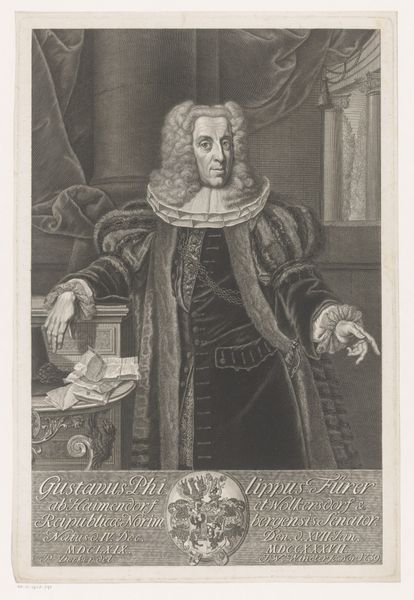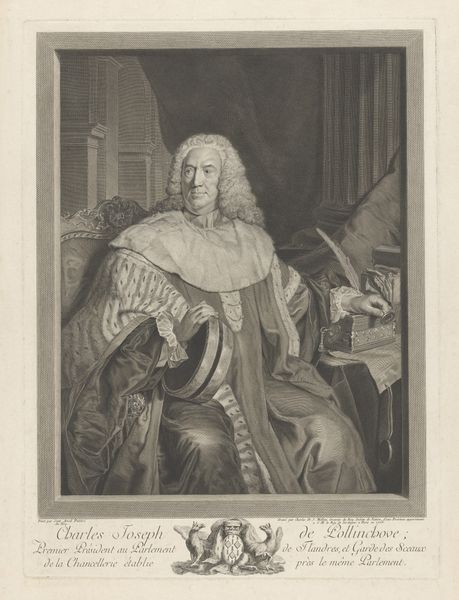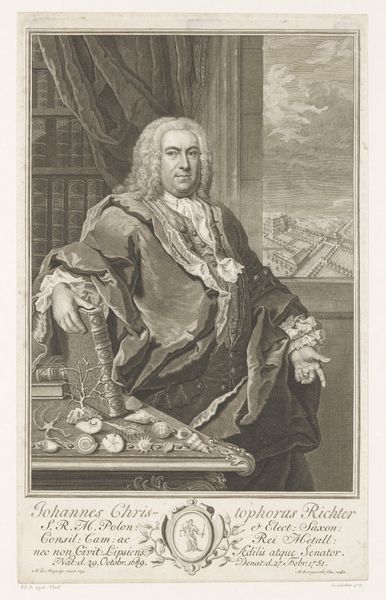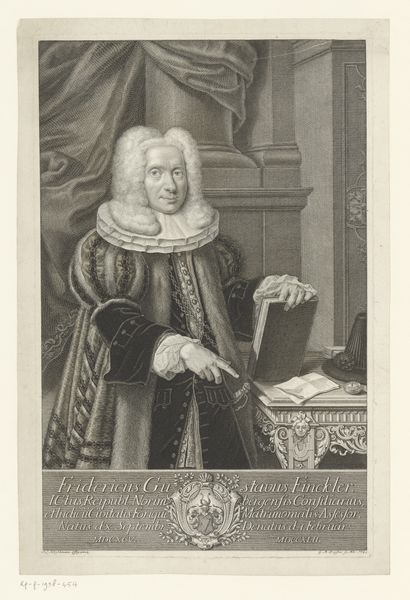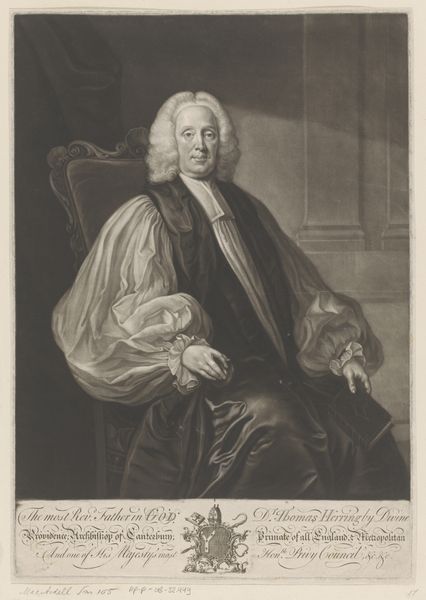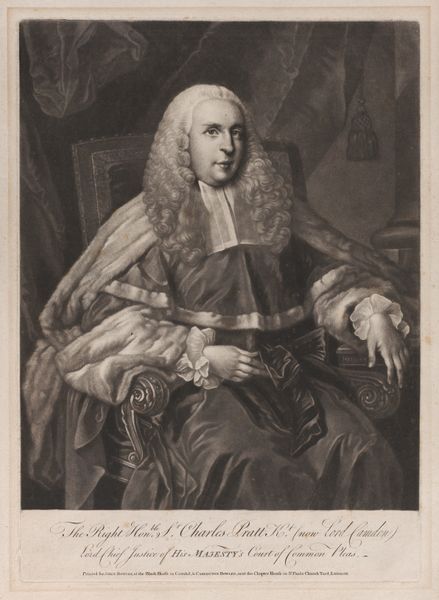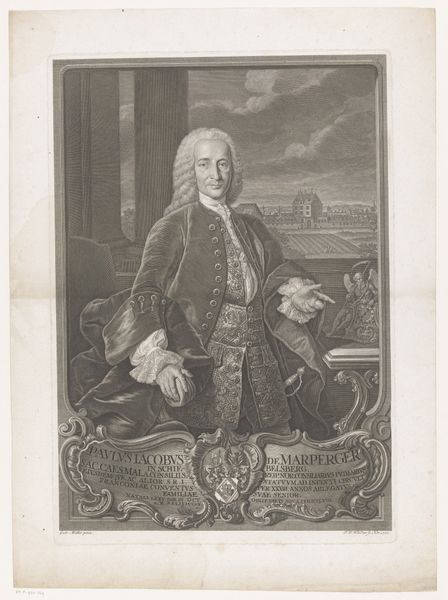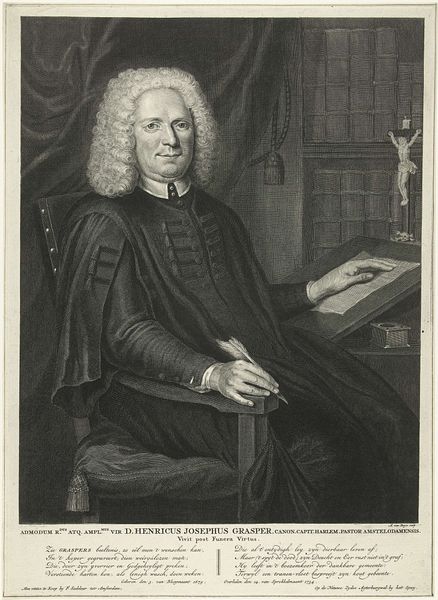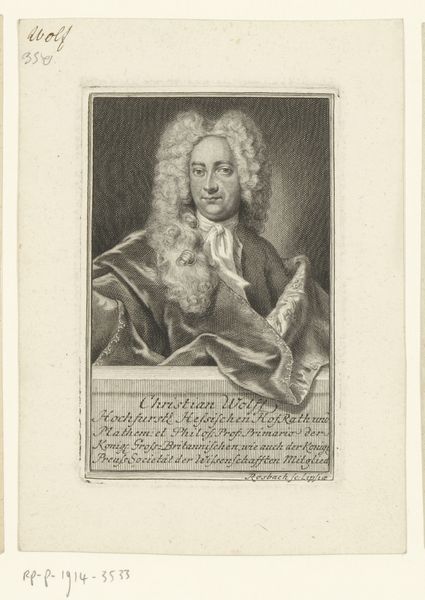
Dimensions: height 470 mm, width 332 mm
Copyright: Rijks Museum: Open Domain
This is Johann Georg Wille’s portrait of Nicolas-René Berryer, made using the technique of engraving. Instead of traditional art materials like paint, Wille used tools to incise lines into a copper plate. Look closely, and you’ll see that the entire image is composed of these meticulously placed marks, which hold ink and transfer the image to paper. The density and direction of the lines create the illusion of shadow and form, bringing Berryer to life. Engraving demands incredible skill and precision. The engraver must have a deep understanding of both the material and the subject to translate a three-dimensional scene into a two-dimensional image. Consider the sheer labor involved in producing this intricate portrait, one line at a time. Wille elevated printmaking to a high art form, and prints like this played a crucial role in disseminating knowledge and culture. The fact that this portrait could be reproduced and distributed widely speaks to the democratizing potential of printmaking, challenging traditional distinctions between unique artworks and mass-produced images.
Comments
No comments
Be the first to comment and join the conversation on the ultimate creative platform.
